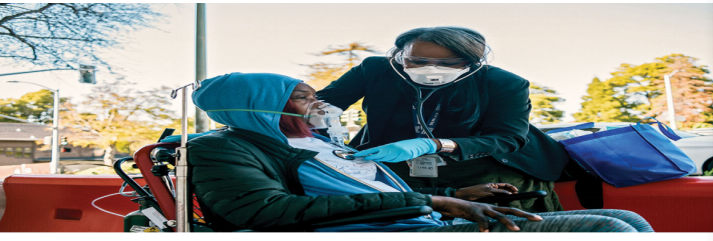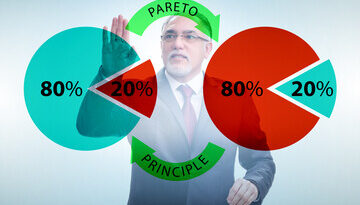Black American Health Crisis

Black people’s health is poor, and widespread racism is to blame. Compared to white women, black women had a four times higher risk of dying from problems during pregnancy[1-3]. Black guys are more than twice as likely as white men to be killed by police. Black Americans have a four-year shorter average life expectancy than the rest of the country [4-6].
Racial discrimination has been deemed a public health problem in more than 20 cities and three states. The designations, according to its proponents, are intended to inspire reforms in all facets of government. Critics claim they don’t go far enough, don’t recommend concrete steps, and don’t set aside funds to deal with the problem [7, 8].
Institutional racism has been deemed an important public health concern by the American Medical Association, the American Academy of Pediatrics, and the American College of Emergency Physicians. Dr. Leana Wen, an emergency physician and professor of public health at George Washington University, believes that when she discussed racism as a public health issue, it served as a rallying cry [9, 10].
Poor general health is a problem in many Black communities due to higher rates of poverty, unemployment, subpar housing, and exposure to harmful environments; less access to high-quality medical treatment; and implicit prejudices among health professionals. Black Americans still have lower health outcomes than white Americans even once class and poverty are taken into consideration. According to research on public health, the racism that Black Americans see on a daily basis stresses them out, which negatively impacts their internal organs and general physical health. As a result, they are more likely to develop chronic diseases and die younger [11-13].
One of the first municipal governments in the nation to declare racism a public health emergency is Milwaukee County. Since then, racial fairness training has been provided to more than 4,000 county workers. In order to guarantee that expenditures, budget cutbacks, and capital investments are made in a racially equal manner, the county has also established a budgeting tool that its departments must utilize [14, 15].
In Maryland, a councilperson requested that racism be classified as a public health emergency by the Montgomery County Council. He intends to follow it up with a suggestion to alter police policies. According to Jawando, “people frequently conceive of racism as a personal failing that is undesirable. But they fail to link the more than 400 years of widespread, legal racism [16, 17].
Whether it’s food deserts, financial redlining in some ZIP codes, or the higher rate of automobile accidents involving people of color in places that aren’t walkable, racism is ultimately at blame, according to Jawando. According to him, black individuals are not treated because they are not considered to be sick [18].
According to the county’s health director, the public health emergency proclamation aims to address implicit bias in addition to overt racism. Dr. Travis Gayles states, “I don’t think latent prejudice will instantly disappear. Gayles: “But the law makes it necessary to have the dialogue.” According to him, the growing number of local public health announcements might herald the start of improved health outcomes for people of color [19].
Dr. King says that something is a public health concern if it causes harm or death to others. You must first define a problem in order to address it, he asserts. King: “Name racism as the first action, as the first thing you must do.” “When you see it, name it.” [20]
[1] D. C. Owens and S. M. Fett, “Black maternal and infant health: historical legacies of slavery,” American Journal of Public Health, vol. 109, no. 10, pp. 1342-1345, 2019.
[2] S. Sullivan, “Inheriting racist disparities in health: Epigenetics and the transgenerational effects of white racism,” Critical Philosophy of Race, vol. 1, no. 2, pp. 190-218, 2013.
[3] M. J. Tucker, C. J. Berg, W. M. Callaghan, and J. Hsia, “The Black–White disparity in pregnancy-related mortality from 5 conditions: differences in prevalence and case-fatality rates,” American journal of public health, vol. 97, no. 2, pp. 247-251, 2007.
[4] B. Western, Punishment and inequality in America. Russell Sage Foundation, 2006.
[5] J. G. Miller, Search and destroy: African-American males in the criminal justice system. Cambridge University Press, 1996.
[6] J. H. McWhorter, Losing the race: Self-sabotage in Black America. Simon and Schuster, 2000.
[7] C. Hamlin, Public health and social justice in the age of Chadwick: Britain, 1800-1854. Cambridge University Press, 1998.
[8] C. F. Sabel and W. H. Simon, “Destabilization rights: how public law litigation succeeds,” Harv. L. Rev., vol. 117, p. 1016, 2003.
[9] E. National Academies of Sciences and Medicine, Countering violent extremism through public health practice: Proceedings of a workshop. National Academies Press, 2017.
[10] R. A. Karasek, T. Theorell, J. E. Schwartz, P. L. Schnall, C. F. Pieper, and J. L. Michela, “Job characteristics in relation to the prevalence of myocardial infarction in the US Health Examination Survey (HES) and the Health and Nutrition Examination Survey (HANES),” American journal of public health, vol. 78, no. 8, pp. 910-918, 1988.
[11] G. W. Evans and P. Kim, “Multiple risk exposure as a potential explanatory mechanism for the socioeconomic status–health gradient,” Annals of the New York Academy of Sciences, vol. 1186, no. 1, pp. 174-189, 2010.
[12] D. Hernández, “Affording housing at the expense of health: exploring the housing and neighborhood strategies of poor families,” Journal of Family Issues, vol. 37, no. 7, pp. 921-946, 2016.
[13] M. Desmond, C. Gershenson, and B. Kiviat, “Forced relocation and residential instability among urban renters,” Social Service Review, vol. 89, no. 2, pp. 227-262, 2015.
[14] T. H. Anderson, The pursuit of fairness: A history of affirmative action. Oxford University Press, 2004.
[15] B. Turnock, Public health. Jones & Bartlett Publishers, 2012.
[16] J. W. Hutto and R. D. Green, “Social movements against racist police brutality and Department of Justice Intervention in Prince George’s County, Maryland,” Journal of Urban Health, vol. 93, no. 1, pp. 89-121, 2016.
[17] S. W. Allard and B. Roth, “Strained Suburbs,” Brookings Institute Metropolitan Opportunity Series, 2010.
[18] E. Badger, C. C. Miller, A. Pearce, and K. Quealy, “Extensive data shows punishing reach of racism for black boys,” The New York Times, vol. 19, 2018.
[19] C. Jackson, “The Role of Empowerment in the Job Search Process of Re-Entering African American Men,” 2013.
[20] U. P. S. T. Force, U. S. O. o. D. Prevention, and H. Promotion, Guide to clinical preventive services: report of the US Preventive Services Task Force. US Department of Health and Human Services, Office of Public Health and …, 1996.

